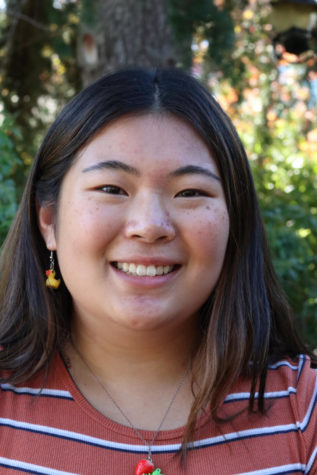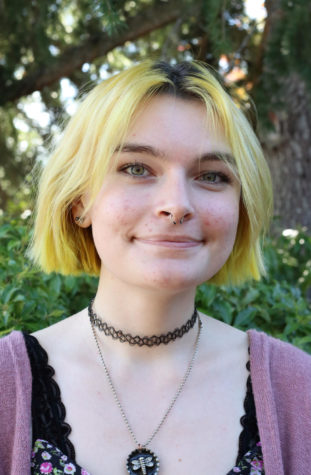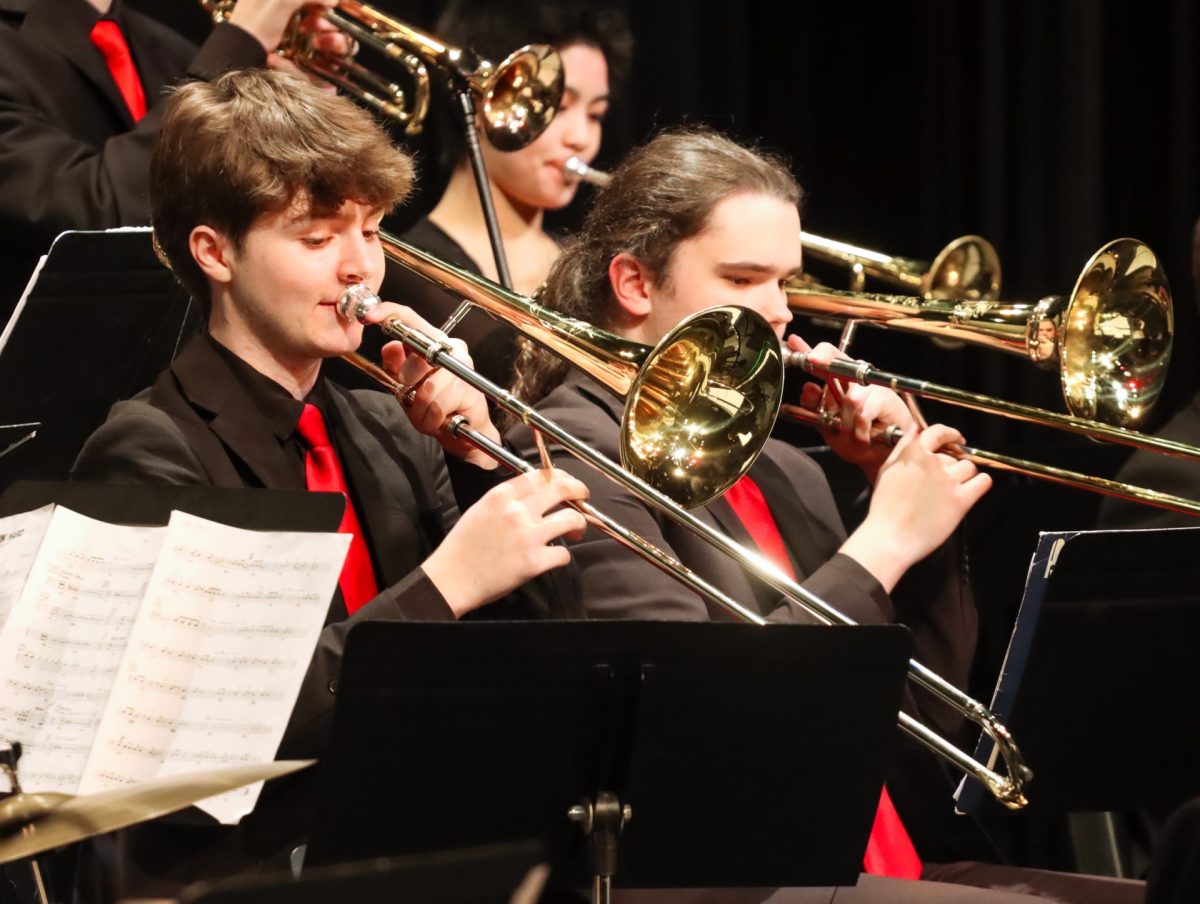Another quarter has passed for the Edmonds School District in the Continuous Learning 2.0 model, and with the second semester comes new views on how to best navigate the challenges presented by the ongoing COVID-19 pandemic. Everyone has had to adapt to the odd and ever-changing circumstances in one way or another, but one of the groups that has had to adapt the most in a school setting is student teachers. With their first experiences teaching in a classroom setting being in an online model, their careers as teachers are starting off on an unprecedented note.
Like any other year, the student teachers at MTHS had certain expectations to meet before they were allowed to jump into teaching students in the classroom. However, with the remote learning model of school being an experience unlike any other, they have had different expectations than they would’ve had if their introduction had been in-person.
Sean Grimm, the student teacher for Adam Bazant, who teaches the classes AP U.S. History and World 10, was not surprised with the peculiar star to this school year.
“I knew what I was getting into,” Grimm said. “I was prepared, and being placed back in July, I had an opportunity to practice using Zoom and adapt to an online environment.”
Because Grimm knew that he would be student teaching at MTHS back in July before the school year began, he had time to prepare and plan with his colleagues on how to go about the new online model. Some student teachers weren’t as lucky and were placed later on, with less time to prepare themselves for the upcoming school year.
Along with Grimm, Patrick Sweet, the student teacher for Christopher Ellinger, the AP European History and Honors Humanities teacher, was also aware that he’d be teaching at MTHS since July. However, he didn’t expect his online teaching experience to play out quite like it did when he first began.
“When I started I didn’t know it would be online,” Sweet said. “I started at the University of Washington (UW) last March, so the last day of the quarter is when everything shut down. My program started a week after everything shut down and they didn’t know how to start.”
Originally, Sweet was meant to be placed in a school that was partnered with the UW, but due to the unique circumstances, he ended up being sent to work at MTHS. Like Grimm, Sweet learned who he’d be working with over the summer and spent the months preceding the start of the school year planning with Ellinger to navigate the obstacles of online learning as effectively as possible.
With expectations in mind, the two stepped into their virtual classrooms headfirst. While both had a general idea of what needed to be done, they needed to learn to adjust. Over the course of the first semester, the student teachers reshaped their approaches to teaching to best aid in students’ understanding. Certain struggles became intensified from the online atmosphere, forcing them to stray slightly from their original plans and teaching styles.
Grimm and Sweet found similar problems in trying to teach students in an online setting, mainly being the lack of student participation and connectivity. Both believe a lot of the difficulty comes from the short, 25 minute class periods, as well as the countless distractions that exist in one’s home.
“I think it’s really difficult for students to keep track of these shorter classes,” Sweet said. “If you don’t have that experience with writing down your assignments, then you’ll struggle.”
He’s also discovered personal difficulties with shortened classes and their limitations. Being used to more time and interactivity, Sweet had to rework his approach to teaching this year.
“Online, a lot of the time it’s like you’re recording a speech because it’s more about the timing. The classes are so short that any little disruption can throw you off, so there’s a lot more planning than if I was in there in-person.” Sweet said. “There are also so many distractions, because when you’re at home, there are a lot of different things that can grab your attention.”
In a normal setting, Sweet would approach teaching by going more in-depth and fully delving into a topic, making sure each individual student understood the material. Since the beginning of the year however, he learned that the online format requires him to be more concise in his lessons.
“The biggest change has been implementing a more structured approach,” Sweet said. “I’m big on the complexity of situations and exploring the connections to students’ lives, because if we can explore the interest, they’re golden. But, that approach is not ideal in an online environment. You need more structure, especially when you can’t see students all the time.”
Faced with the same connectivity and interaction issues as Sweet, Grimm’s taken an entirely different approach in navigating the situation. He prioritizes the connections to students through a more unscripted style of teaching.
With a 14-year-old son himself, Grimm saw his boredom within the remote learning environment from a different perspective. This has motivated him to focus more on making his own students’ experience more enjoyable and fun with an enthusiastic teaching style.
Grimm considers any interaction from his students as a win in his book. He mentioned one student who rarely participated was willing to turn on his camera, although he was making a bagel sandwich for the entirety of the class period.
“He was willing to give us more than a black box or while wall,” Grimm said. “Not quite what I wanted, but it was better than nothing.”
Remote learning is nowhere close to the physical classroom experience, so adjustments were unavoidable given the situation. Creating a comfortable environment for kids to participate in has been an accomplishment for Grimm.
A student teacher’s goal is to gain teaching experience and learn from their mentor. Even in these challenging times, the student teachers have gotten valuable lessons from their mentors.
From Bazant, Grimm has learned valuable lessons regarding how to create exciting lectures that will engage students. Although both have contrasting personalities, and at times teaching styles, both share a mutual goal of having kids participate while also having fun in class.
“Asking students questions prompts them to think more and deeper about the material,” Grimm said. “It also allows the students to join the conversation so it isn’t just me rambling on.”
Also adding in the difficulty in doing this all within 25 minutes, getting students to engage has been more difficult than ever before. When a lesson needs to be taught, there isn’t any room for error.
From being under Ellinger, Sweet has been there for each of his classes, and has received a few tips and tricks about how to give intriguing lectures and some specifics into lesson planning.
“The big thing he really helped me with is I’ve gotten better at being more concise with my explanations,” Sweet said. “He has a really strong structure of rhythm and organization and he has helped me a lot with that and challenging my ideas and confirming why I am doing this. If you can’t explain it you need more work on it, if you don’t know why you’re giving students work then you shouldn’t give it to them. It should only be given if it’ll get them to a goal.”
As crazy as the semester has been, these student teachers have gained the experience of a lifetime by teaching during a global pandemic. While there are a lot of negatives in this setting, there are some positives as well. These events and the constantly altering situation have prepared student teachers to go out into the workforce and teach their own classes.
Grimm said he’s learned about the concept of relationship management as a result of remote learning. He has set a goal to check on students individually through methods of Zoom messages to make them feel more comfortable with engaging in discussions or turning on their cameras.
He hopes that this will then create a student to teacher relationship, encouraging students to participate in class given the comfortable environment during the hard times of remote learning, as it may be difficult for students in an online setting to reach out to teachers they are unfamiliar with.
When asked if he feels prepared for actual in person teaching on his own, Sweet, although nervous as many are, seemed excited for the chance to teach in front of his students.
“For the most part I am sure it will be easier in person, there is twice as much work online than in person,” Sweet said. “I am going to be actually learning when I go out in the field. If you are not learning and developing while you are teaching, then there’s something wrong.”
Despite the difficulties and hurdles that online teaching has provided, both Grimm and Sweet feel they’ve learned and are better prepared for their future careers as teachers because of the lessons they have learned in this environment.









